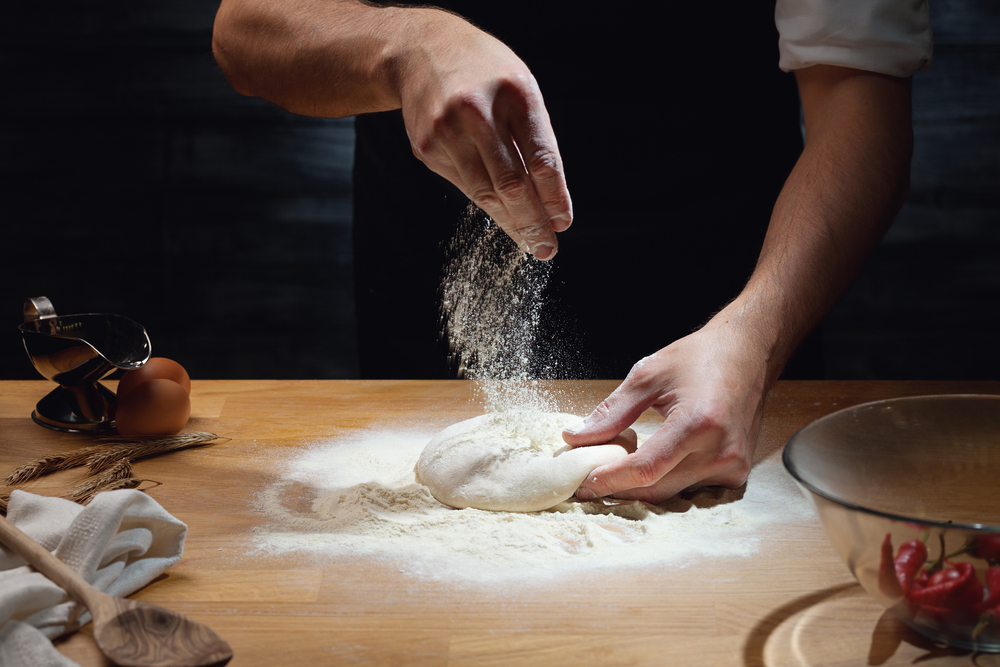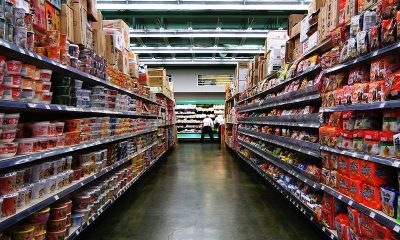Food
‘Ghost kitchens’ emerge in Canadian food scene as delivery grows in popularity

Ghost kitchens, also known as virtual kitchens, have cropped up in increasing numbers across the U.S. and U.K. in recent years, but have only recently started seeping into the Canadian market, which Kottas said is ripe for the model. (Shutterstock)
TORONTO — George Kottas owns 15 restaurants in the Greater Toronto Area, but almost none of them have a dining room or takeout counter, and if you wandered into most, you’d be hard-pressed to find any customers.
These characteristics might seem like a recipe for disaster in the cutthroat restaurant world, but instead, they’re the signature traits of ghost kitchens — a rapidly emerging business model where entrepreneurs operate multiple delivery-only food businesses from a network of kitchens that often don’t serve walk-in customers.
Ghost kitchens, also known as virtual kitchens, have cropped up in increasing numbers across the U.S. and U.K. in recent years, but have only recently started seeping into the Canadian market, which Kottas said is ripe for the model.
They’ve been made possible by the rise of delivery apps including Uber Eats and Skip the Dishes and bolstered by the growth of consumer demand for convenience when it comes to food.
“I never thought in my wildest dreams not having a store presence would work? Now I have 15 stores open,” said Kottas, who uses Uber Eats and Skip the Dishes for deliveries through his Dekotas Group company, which has burrito, bubble tea, Philly cheesesteak, poutine, pierogi, Middle Eastern and Greek concepts.
“I am just about to launch in Calgary, Vancouver, Montreal and Ottawa. My goal is to have a store every four-kilometres across Canada.”
Kitchens like his allow entrepreneurs to save on the staff and real estate they would need to operate a fully-fledged restaurant, while giving them a chance to experiment with new food or dining concepts that can easily be abandoned with little cost if they aren’t a success.
Kottas, a longtime franchise developer, stumbled across the ghost kitchen phenomena by mistake two years ago, when he signed up his east-end Toronto breakfast joint Bite Me Grill for Uber Eats and forgot to set times for when he would accept orders. When the restaurant closed in the afternoon, it would often receive up to 40 orders that would go unfulfilled.
“A lightbulb went off instantly,” he said. “Within a week or so I started getting my staff to stay from 3 p.m. to 9 p.m. Within two or three weeks, I had staff staying until midnight and within a month, I went 24 hours.”
Then he started using the kitchen to venture beyond the breakfast fare sold at Bite Me Grill, opening individual delivery-only restaurants centred on a wide range of foods.
Uber Eats often weighs in on what ideas he should explore next, providing data on demand for specific kinds of food that it is seeing in particular neighbourhoods. For example, the company’s insight fuelled his recent pizza concept and the vegan and sushi restaurants he is rolling out next.
While some critics might say his concept is too dependent on third-party delivery services, Kottas said the model is so strong he doesn’t have to fret over his reliance on such apps.
“Nothing is going to stop this,” he said, noting that ghost kitchens are helping restaurants cope with increasing minimum wage and food costs. “I don’t think it is a fad.”
For now, Kottas has few competitors in Canada, said Uber Eats program manager Elyse Propis, who counts 50 ghost kitchens across the country. Most of those are restaurants with dining rooms or takeout windows that use their kitchens to run delivery-only businesses selling completely different food from their in-house eatery.
Propis has found they are attracted to the model because they are able to leverage the space, the equipment, the staff and many of the ingredients they already have.
“Opening a brand new restaurant is risky and expensive and we are helping them spin a new delivery-only restaurant out of their existing kitchen in a way that is likely to succeed given our data shows there is demand for it,” she said.
Executive chef Joey Hicks said he was “totally against” the ghost kitchen concept, when the Toronto restaurant he works at, Italian chain Pizza Rustica, rolled it out under the 6IX Food Hall name.
He was initially put off by it because he said it takes a month to educate and train staff on how to use delivery company software and cook all the menu items. At 6IX Food Hall, chefs need to be able to toggle between a wide range of concepts, including curry, poutine, noodles, fried chicken and desserts, within a moment’s notice.
There have also been some hiccups with teaching delivery staff that the building they will pick up ghost restaurant orders from won’t have that restaurant’s signage, but the model is still catching on and has now won over Hicks.
“We are ahead of the curve,” he said. “It is new, but I think in the next six months it is going to be a normal thing for a lot of restaurants? In the next year, I believe every restaurant will have it.”





















